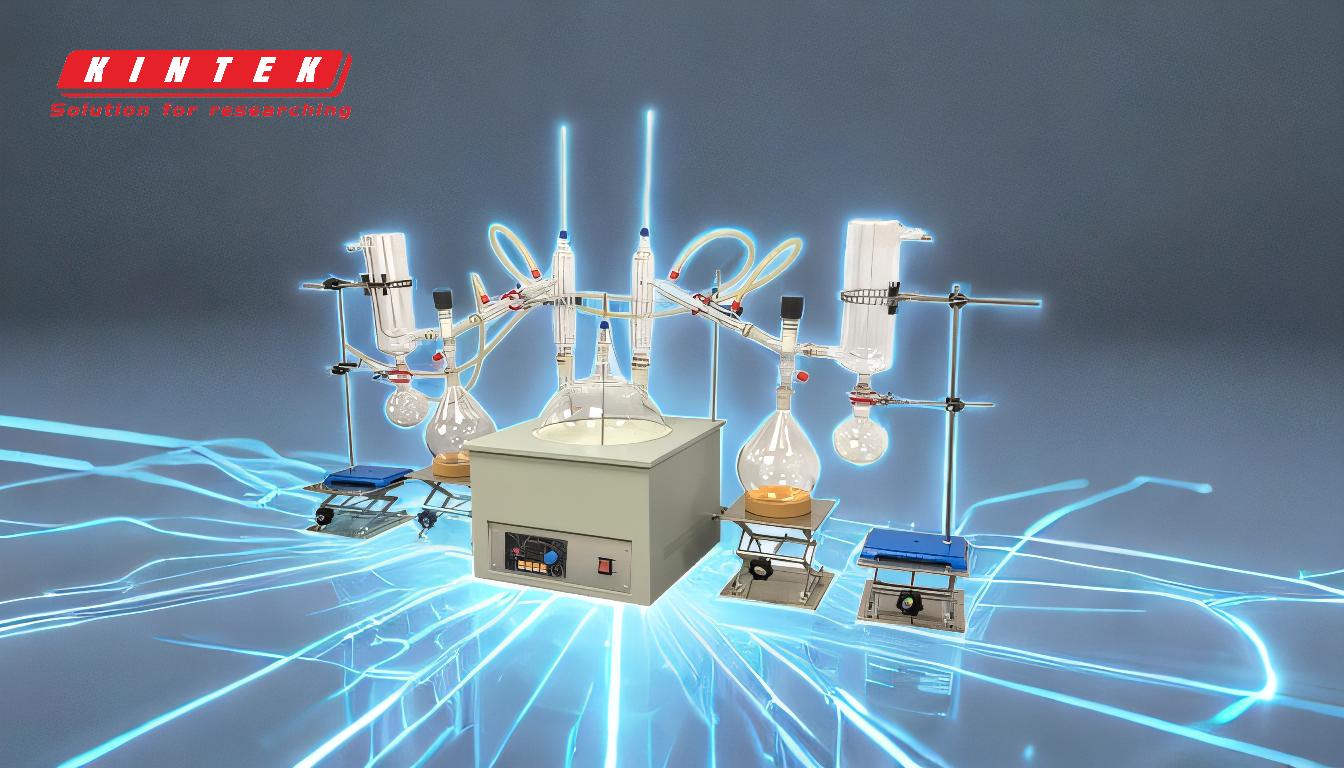Distillation is a critical process used to purify substances by separating components based on their boiling points. In the context of cannabinoid purification, distillation ensures the removal of impurities and solvents while preserving the desired compounds. The process involves gradually raising the temperature, monitoring the condensation process, and collecting the distillate once it is free of coloration or streaks. Thin film technology enhances efficiency by spreading the oil into a thin layer, allowing for quicker and more effective evaporation of unwanted materials. The purity of the final product is indicated by its clarity, lack of coloration, and the absence of streaks, ensuring a high-quality distillate.
Key Points Explained:

-
Temperature Control and Monitoring:
- Distillation relies on precise temperature control to separate components based on their boiling points. By gradually increasing the temperature, impurities with lower boiling points are evaporated and removed first.
- Monitoring the temperature ensures that the desired cannabinoids are not damaged, as they typically have higher boiling points compared to many impurities.
-
Condensation Process:
- As the temperature rises, the vapors produced are condensed back into liquid form. The condensation process is crucial for separating the desired distillate from impurities.
- The distillate is collected once it appears clear and free of coloration or streaks, indicating a high level of purity.
-
Thin Film Technology:
- Thin film technology enhances the efficiency of the distillation process by spreading the oil into a thin layer. This increases the surface area, allowing for quicker and more effective evaporation of unwanted materials.
- The use of thin film technology ensures that the distillation process is both faster and more effective, leading to a purer final product.
-
Visual Indicators of Purity:
- The purity of the distillate is visually indicated by its clarity and the absence of coloration or streaks. A clear, colorless distillate suggests that most impurities have been removed.
- The process continues until the desired level of purity is achieved, and the main body of the distillate is collected in a clean flask.
-
Collection of Distillate:
- The final step in the distillation process is the collection of the purified distillate. This is done once the distillate meets the visual criteria for purity.
- The collected distillate is then ready for further processing or use, ensuring a high-quality product free from impurities and solvents.
-
Role of Vacuum Pressure:
- Vacuum pressure is often used in distillation to lower the boiling points of the components, allowing for separation at lower temperatures. This helps in preserving the integrity of the desired cannabinoids.
- The combination of heat and vacuum pressure ensures that the distillation process is both efficient and effective in removing impurities without damaging the product.
By carefully controlling the temperature, monitoring the condensation process, and utilizing advanced technologies like thin film distillation, the purity of the final distillate can be effectively indicated and ensured. This meticulous approach guarantees a high-quality product that meets the desired standards of purity.
Summary Table:
| Key Aspect | Description |
|---|---|
| Temperature Control | Precise temperature control separates impurities based on boiling points. |
| Condensation Process | Vapors are condensed into liquid, ensuring separation of pure distillate. |
| Thin Film Technology | Spreads oil into a thin layer for faster, more efficient evaporation of impurities. |
| Visual Indicators | Clarity and lack of coloration indicate high purity. |
| Distillate Collection | Collects purified distillate once visual purity criteria are met. |
| Vacuum Pressure | Lowers boiling points, preserving cannabinoid integrity during separation. |
Discover how distillation can enhance your cannabinoid purification process—contact our experts today!










